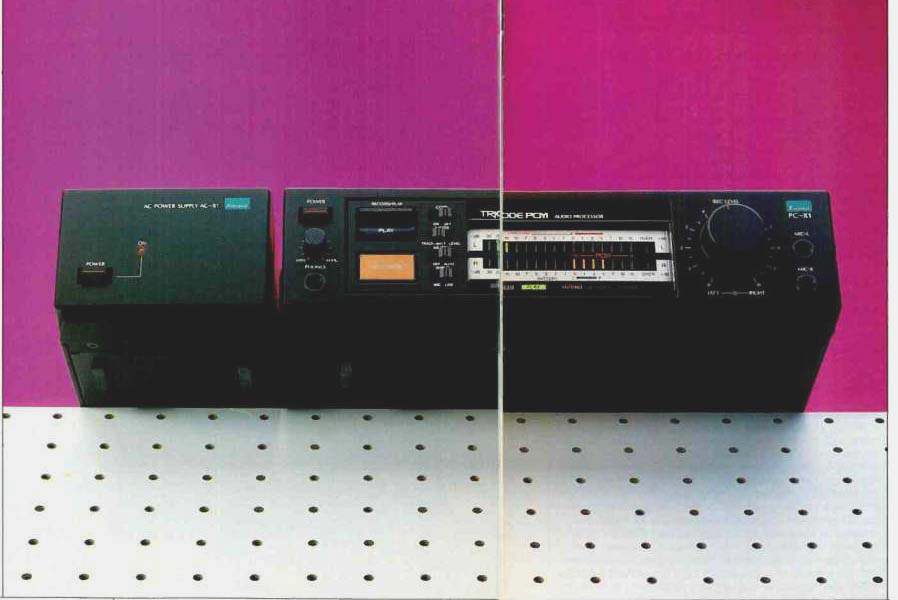
Manufacturer's Specifications:
Frequency Response: 5 Hz to 20 kHz, +0,-0.5 dB.
THD: Less than 0.007% at 1 kHz.
Dynamic Range: More than 86 dB.
Input Sensitivity: Line in, 90 mV; mike in, 0.45 mV; video in, 1 V p-p.
Maximum Allowable Input (1 kHz, for 0.02% THD): Line in, 500 mV; mike in, 2.5 mV.
Quantized Bits: 14-bit linear quantization.
Sampling Frequency: 44.056 kHz.
Code Format: EIAJ standard format.
Power Consumption: Using d.c. supply, 16 watts.
Power Consumption: Using AC-X1 d.c. power supply accessory, 35 watts.
Dimensions: 10 1/2 in. (26.6 cm) W x 2 1/2 in. (7.3 cm) H x 11-5/16 in.
(28.7 cm) D. Weight: 5.5 lbs. (2.5 kg).
Price: $1,000.00.
Company Address: 1250 Valley Brook Ave., Lyndhurst, N.J. 07071.
The thing that makes Sansui's PC-X1 different from other EIAJ-format PCM processors that are designed to work with videocassette recorders is its TriCode circuitry, which gives it the remarkable ability to "read" deteriorated PCM signals that other such processors might well fail to read. From a practical point of view, what this means is that you can record digital audio at the slowest available VCR tape speeds and still get error-free, mute-free playback with the same level of performance as you would get at faster tape speeds. If you own a VHS VCR, that means you can record up to eight hours of high-quality digital audio on a single T160 videocassette. When you stop to think of it, that's an incredible bargain compared with any other high-quality recording medium, and with Sansui's PC-X1 selling for $1,000.00, the price/performance ratio of such a recording system becomes even more attractive.
The PC-X1 can be used with any one of three different power sources, household a.c., internally housed battery pack, or automobile battery. The battery pack (Model LCS2012V or VW-VB10) is not included in the purchase price of the PC-X1, but the a.c. power supply is packaged with the unit. A fully charged battery will allow about 90 minutes of continuous recording or about one hour of continuous playback.
A pair of useful checking functions is included in this well designed PCM processor. You can check and adjust VCR tracking using the metering system on the PC-X1, and another check function allows you to check battery charge status at a glance. During playback, an automatic muting function prevents the generation of noise bursts in the event of dropouts or other tape impairments. A "Rec Mute" switch allows you to cut out unwanted portions of sound during recording and to create silent intervals between selections.
Additional features of this unit will be apparent from the description of the front panel, which follows.
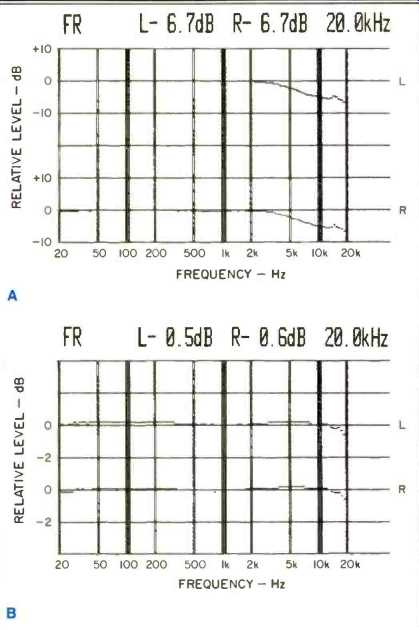
Fig. 1--Record-replay frequency response of Sansui PC-X1 processor and
VCR combination. Note that in (A), overload caused high-end roll-off.

Fig. 2--Second-order
harmonic distortion vs. record level for the PC-X1 and VCR. Distortion was
negligible at maximum record level shown in (A), but increased rapidly to 4.8%
when overload levels of +4 dB were recorded, as shown in (B).
Control Layout
A power on/off switch, headphone jack, and headphone level control are positioned at the extreme left of the front panel. A "Record/Play" rocker switch and a momentary "Rec Mute" pushbutton switch are just to their right, while still further to the right is a vertical row of four slide switches.
The first of these, labeled "Copy," allows you to perform dropout-compensated digital tape-to-tape copying with no deterioration of sound quality. A "Meter" mode switch selects meter function, either "Level" or "Track/Batt," which transforms the left-channel meter into a tape-tracking indicator and the right-channel meter into a battery-status indicator. A "Muting" switch, normally set to the "Auto" mode to prevent noise caused by dropouts or other tape faults, can be turned "Off," in which case more noise will be heard, but playback will continue without mute interruptions. The fourth switch in this group, an "Input" selector, chooses "Line" or "Mic" signal inputs to the processor.
A two-channel meter display at the center of the panel has an interesting calibration scheme which might well serve as a model for all digital recording equipment designed for nonprofessional use. Since "0 dB," in the case of digital recording, has no real standardized value, Sansui has elected to calibrate "0 dB" at a point some 15 dB below the maximum allowable record level of the system. The LED metering system is therefore calibrated from-30 dB to + 15 dB, with the "0 dB" mark occurring just past the halfway mark on the calibrated scale. Users are instructed to set levels so that average readings are at "0 dB" while peak levels are kept at or just below the + 15 dB mark. If levels exceed that maximum allowable + 15 dB mark, a red "Over" display lights up. "Record," "Play," "Muting," "No Copy," and "Charge" indicator lights below the meter display illuminate when appropriate. The "No Copy" light will come on when playing back a tape that contains a tape copy prohibition code, to indicate that a digital copy cannot be made.
Dual concentrically mounted left- and right-channel record level controls are located to the right of the display area, and individual left- and right-channel microphone input jacks are at the extreme right edge of the front panel. A battery-insertion door flap, battery eject button, and a 12-V d.c. input terminal are all located at the rear of the left side panel of the PC-X1. The right side panel contains all remaining jacks, switches, and controls.
These include a low-cut filter on/off switch for cutting out low frequency or infrasonic noise when using a microphone, a microphone input attenuator (which offers 20 dB of attenuation in its "on" position), left- and right-channel line input and output jacks, video-in and-out jacks (for connection of the associated VCR), a "Copy Out" jack, which delivers a digital (PCM) signal for copying from one tape to another, and a small rotary control labeled "Read Level." This control, normally set at its detented midpoint, can be rotated if the tracking adjustment referred to earlier cannot be fully accomplished using the VCR's tracking control. Two additional jacks, identified as "Monitor TV" and "Video Tuner," plus a "TV/Processor" slide switch allow you to use both your component TV set (if you own one) and your digital processor/recording system without having to change system connections. In addition, the arrangement allows you to "watch" the digital pattern on a TV screen if you derive pleasure from such "bit gazing" (see Fig. 5).
Measurements
Having been involved in the testing and evaluation of many CD players for just over a year, I have become accustomed to truly incredible dynamic range and signal-to-noise figures, and to the negligibly low distortion figures associated with a 16-bit linear quantization system. The standard EIAJ system for PCM recording on videotape employs a sampling rate not far removed from that used in the CD system (44.056 kHz as opposed to 44.1 kHz) but is, however, a 14-bit system. As such, its best possible dynamic range, signal-to-noise and harmonic distortion performance cannot match the best theoretical figures obtainable with CD players. Still, the results I did get using the Sansui PC-X1 are impressive and certainly far superior to what you might expect from a top-quality home or even professional reel-to-reel analog tape deck.
One problem of measurement (but not inherent in the processor itself) became apparent when I tried to plot frequency response at maximum record level-the + 15 dB designation on the meter scales. Since the unit has built-in non-defeatable pre-emphasis (during recording) and de emphasis (during playback), high frequencies overloaded the system during the automatic sweep of my Sound Technology 1500A, and the overload light flashed its warning for a good part of the sweep. Results of this incorrect plot are shown, as a matter of interest, in Fig. 1A. Note that in this plot, the vertical scale is 10 dB per division, and overload causes a roll-off to begin above 2 kHz, where pre-emphasis pushes levels beyond the maximum allowable record level.
Though due to a completely different set of phenomena, the resulting curves, shown more as a matter of academic interest than as an indication of performance, resemble those obtained at "0 dB level" on a cassette recorder when tape saturation limits high-frequency output.
Once I backed off the level to allow for pre-emphasis, response settled in nicely, as shown in Fig. 1B. Here, it was flat over nearly the entire audio spectrum, exhibiting a roll off of only 0.5 dB at 20 kHz for the left channel and 0.6 dB at 20 kHz for the right channel during playback. Note that Fig. 1B was plotted using a more sensitive vertical calibration, 2 dB per division.
Distortion, at levels up to and including an indicated + 15 dB, measured 0.006% at 1 kHz, 0.01% at 10 kHz, and 0.007% at 20 Hz. To illustrate the effects of over-recording, I plotted second-order and third-order distortion using the Sound Technology 1500A tape tester, much as I would for an analog tape deck or tape test. Bear in mind that the lowest distortion that this instrument can read is 0.01%, and the readings listed above were made using another, more sensitive distortion analyzer. The point I am trying to illustrate in Figs. 2 and 3 is how rapidly overload distortion occurs with any PCM system once you exceed maximum record levels.
In Fig. 2 I have plotted second-order distortion versus record level. The double vertical line represents + 15 dB level (maximum allowable) on the PC-X1 metering system, and the test frequency was 1 kHz. With the cursor set to this reference level, identified as "0 dB" by the test instrument, in Fig. 2A, the distortion reading was as low as the instrument can give, 0.01%. The "blips" that appear in the display to the right of the double vertical line show the rapidly rising distortion as record levels are increased above the allowable maximum. In Fig. 2B, with the dotted line cursor now set to +4 dB (in reality, 4 dB above the + 15 dB point on the processor's meters), second-order distortion has already risen to a whopping 4.8%. The two lower "blips" visible near the bottom of the graph, just to the right of the reference double vertical line, suggest that up to 3 dB of over-recording will be tolerated fairly well by the system. These represent readings just a bit above 0.03%. The same sort of plot is represented in Figs. 3A and 3B, except that this time the instrument measured third-order harmonic distortion. In Fig. 3A an over-record level of just 1 dB (above the maximum + 15 dB on the meters) produced a third-order distortion reading of 0.05%, while increasing the level by just another dB (to +2 dB above maximum allowable) resulted in a rapid jump of third-order distortion, up to an unusable 3.5%! Signal-to-noise ratio, referenced to maximum allowable record level, measured 80 dB, unweighted, and 83 dB using an A-weighting network. If you add in a couple of dB for allowable overload, the dynamic range of the system comes within a dB or so of the 86 dB claimed by Sansui, hardly worth quibbling about when you are talking about performance quality of this kind.
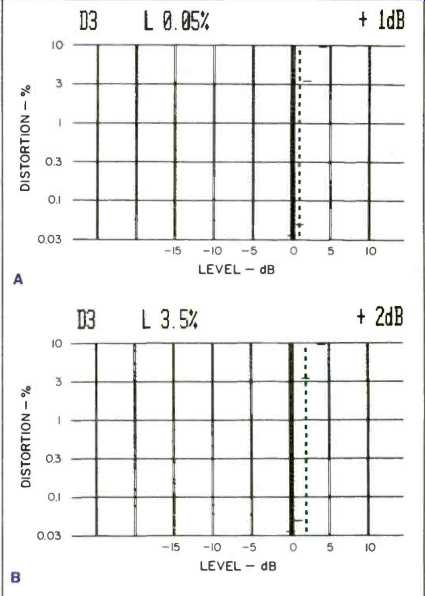
Fig. 3--Same as Fig. 2 except third-order harmonic distortion was measured.
At +1 dB, HD3 was only 0.05% in (A), but it has increased to 3.5% at +2
dB in (B).
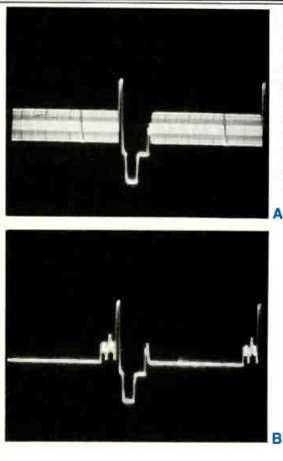
Fig. 4--Scope
photos of one "frame" of PCM-encoded digital audio
data. A maximum amplitude 1-kHz signal is shown in (A), while a no signal
condition is shown in (B).
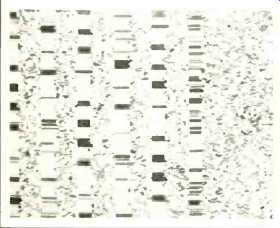
Fig. 5--An "instant" of PCM-encoded music program, as displayed
on a video monitor.
For those interested in knowing just what is actually recorded onto the videocassette when a PCM processor is used, I photographed the face of my oscilloscope when it was connected to the "Copy Out" jack, while turning on a maximum-amplitude 1 kHz at the input to the processor (Fig. 4A) and when no signal was applied to the processor (Fig. 4B). In effect, what you are seeing is a bit more than one complete video "frame" (1/30th of a second's worth of data). In Fig. 4A, the data area is filled in with "ones" (full amplitude pulses), while in Fig. 4B we see that the data area is at lowest amplitude, which, of course, represents absence of signal, or a frame full of "zeros." As a further item of academic interest, I connected the "Copy Out" terminal to my own video monitor during playback of a recorded musical passage. Using the "Pause" button on my VCR, I was able to create a "freeze frame" picture of an "instant" of music, which is shown in Fig. 5. I, for one, am getting to the point where, by gazing at the video screen during playback of a PCM-recorded music program, I can almost distinguish between loud and soft passages, as well as between low and high-frequency tones. I expect it will be some time, however, before I can "read" the patterns as one would read a musical score...
Use and Listening Tests
Since I usually have several Beta and VHS video recorders on hand in my lab, in addition to my own portable and table-top VCRs, I was able to connect the Sansui PC-X1 to several video recorders. I can state that it worked equally well with all of them, regardless of format. The real test, however, was when I ran the PC-X1 with my somewhat antiquated (two-year-old) VHS table-top recorder operated at its slowest (EP) speed, using a T-160 tape. I could detect no difference in performance or sound quality playing back that slow-speed tape, when compared with the sound quality I heard when the same selections were played back after having been recorded on a late-model Beta VCR operating at its fastest Beta II speed. Indeed, my tests suggest that there is no reason to use anything but the slowest available VCR tape speed (Beta II or EP, depending upon your VCR format) for all PCM recording work, unless your tape is of such poor quality or your tape heads are so dirty or damaged that even the Sansui PC-X1 TriCode PCM system cannot read it without muting.
You are probably wondering what material I used for my listening tests. I can remember when I checked out my first PCM processor for Audio a couple of years ago. At that time I jokingly pleaded for some live musicians to come and play in my lab. (Incidentally, I got several sincere offers from local music groups to oblige.) Since then, I've amassed my own collection of source material that's "good enough" to use in evaluating a product such as this one. The source material is, of course, in the form of Compact Discs, some of which are musically superb and as close to "live" music as I've ever heard. Since they utilize a 16-bit system, that also puts them a step ahead (in theory) of what can be accomplished with a 14-bit quantization scheme such as that used in the Sansui PC-X1 processor-VCR combination.
With levels properly adjusted, it was virtually impossible to tell the difference between the CD playback and the PCM-recorded playback of the same material. When I turned up the volume to very loud levels (louder than I would normally employ for serious listening), I was able to detect a bit of residual noise floor in the case of the PCM/tape playback, but it was at a level that I would hardly call intrusive under any reasonable listening conditions.
I am somewhat puzzled by the fact that products such as Sansui's PC-X1 are not selling to serious recordists in greater numbers. I am told that sales of this and other PCM processors are, in the main, being made to small studios, radio stations and other professionals or semi-professionals, but that very few are going to serious audiophiles. It seems to me that with the kind of performance results I heard and measured using the Sansui PC-X1, anyone seeking a superb recording system would jump at a chance to own a true PCM digital recording system such as this one. And particularly so now that prices for such a device are so much lower than they were just a year or two ago. Perhaps it is the inability to edit that stops many prospective buyers, or perhaps it is the knowledge that there are few sources of programming (other than live music or Compact Discs) that are worth transcribing onto such a high-quality recording medium. And as for CDs, the old justification for transcribing mint-condition records onto tape really doesn't apply, since CDs, with proper care, retain their own mint condition indefinitely.
Be that as it may, the Sansui PC-X1 is a superb PCM encoder/decoder that has been intelligently designed for ease of use and that works well even under the most trying conditions that might trip up other PCM processors I have tested in the past. It is reasonably priced, attractively packaged, and superbly engineered. I have tried to learn more about just what TriCode PCM circuitry involves and how it differs from other PCM processor circuitry, but so far Sansui seems intent upon keeping that information to themselves.
While my curiosity remains unsatisfied, I can't really blame the people at Sansui. They have a real winner of a product here, and probably want to keep its secrets for as long as they can.
-Leonard Feldman
(Audio magazine, Jan. 1984)
Also see:
ASC AS-6004/S Open-Reel Recorder (Jan. 1984)
Sansui CD-X901 Compact Disc Player (Jan. 1988)
= = = =